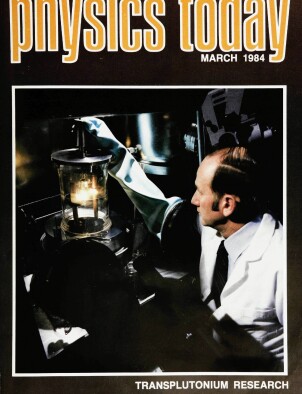Accomplishments and promise of transplutonium research
DOI: 10.1063/1.2916157
Fifty years ago the periodic table of chemical elements appeared to be complete. Most of the gaps left in the table by Dmitri Mendeleev in 1869 had been filled in, and it appeared that with elements 43, 61, 85, and 87, the periodic table of 92 elements—hydrogen to uranium—would be fully realized.
This article is only available in PDF format
References
1. Transuranium Elements: Products of Modern Alchemy, G. T. Seaborg, ed., Dowden, Hutchinson and Ross, Stroudsburg, Pa. (1978).
2. Actinides in Perspective, N. M. Edelstein, ed., Pergamon, New York (1982).
3. Proc. IAEA Symp. Phys. Chem. of Fission, Jülich, IAEA, Vienna (1980), volumes I and II.
4. Superheavy Elements, M. A. K. Lodhi, ed., Pergamon., New York (1978).
5. Transplutonium Elements—Production and Recovery, J. D. Navratil, W. W. Schulz, eds., A. C. S. Symposium Series 161, American Chemical Society, Washington, D.C. (1981).
6. The Environmental and Biological Behavior of Plutonium and Some Other Transuranium Elements, L. Fitoussi, A. Aarkrog, G. F. Clemente, M. Frussel, R. Masse, C. R. Richmond, F. de los Santos Salinas, H. Smyth, F. Gera, Nuclear Energy Agency, OECD, Paris (1981).
More about the Authors
O. Lewin Keller. Oak Ridge National Laboratory.
Darlene C. Hoffman. Los Alamos National Laboratory.
Robert A. Penneman. Los Alamos National Laboratory.
Gregory R. Choppin. Florida State University.




